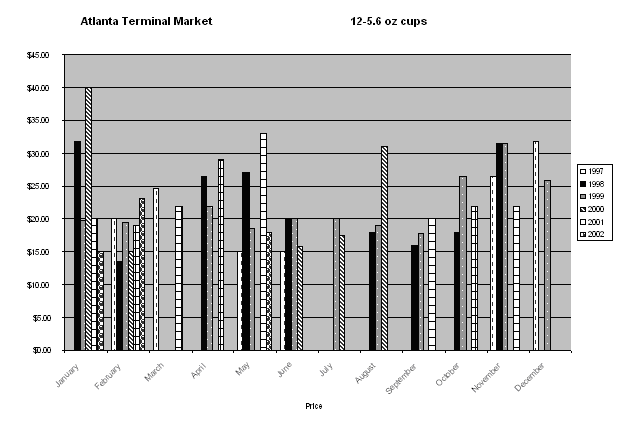Estimated Costs and Returns of Producing, Harvesting and Marketing Blackberries in the Southeastern United States
go.ncsu.edu/readext?451625
en Español / em Português
El inglés es el idioma de control de esta página. En la medida en que haya algún conflicto entre la traducción al inglés y la traducción, el inglés prevalece.
Al hacer clic en el enlace de traducción se activa un servicio de traducción gratuito para convertir la página al español. Al igual que con cualquier traducción por Internet, la conversión no es sensible al contexto y puede que no traduzca el texto en su significado original. NC State Extension no garantiza la exactitud del texto traducido. Por favor, tenga en cuenta que algunas aplicaciones y/o servicios pueden no funcionar como se espera cuando se traducen.
Português
Inglês é o idioma de controle desta página. Na medida que haja algum conflito entre o texto original em Inglês e a tradução, o Inglês prevalece.
Ao clicar no link de tradução, um serviço gratuito de tradução será ativado para converter a página para o Português. Como em qualquer tradução pela internet, a conversão não é sensivel ao contexto e pode não ocorrer a tradução para o significado orginal. O serviço de Extensão da Carolina do Norte (NC State Extension) não garante a exatidão do texto traduzido. Por favor, observe que algumas funções ou serviços podem não funcionar como esperado após a tradução.
English
English is the controlling language of this page. To the extent there is any conflict between the English text and the translation, English controls.
Clicking on the translation link activates a free translation service to convert the page to Spanish. As with any Internet translation, the conversion is not context-sensitive and may not translate the text to its original meaning. NC State Extension does not guarantee the accuracy of the translated text. Please note that some applications and/or services may not function as expected when translated.
Collapse ▲PROJECT LEADER(S): Charles Safley and Gina Fernandez, Departments of Agricultural and Resource Economics and Horticultural Science, North Carolina State University, Raleigh
TYPE OF PROJECT: Research
LOCATION: Raleigh, NC
IMPACT
Current and potential blackberry growers in the southeastern U.S. region need production and financial information to make informed decisions about entering, leaving, or expanding existing operations. Ideally, growers would keep detailed records that would serve as a reference when estimating their production, harvest, and marketing costs, but this typically does not happen. Therefore, the purpose of this study is to provide information about the costs and returns of growing, harvesting, and marketing blackberries. The data will serve as a guide to assist individuals who are considering entering the blackberry industry and those who are currently growing blackberries make more informed business management decisions.
INTRODUCTION
The blackberry market appears to be a profitable venture for North Carolina growers. Blackberries can be sold for anywhere from $15.00 to $40.00 for 12, 5.6 oz cups at terminal markets (Figure 1). In addition to retail outlets, berries can be sold to processors, at pick-your-own locations, and at farm stands as pre-picked fruit. While production guides, marketing studies and yield trials have been completed for blackberries, this production budget completes the package of information needed by growers to become fully informed on what it takes to be financially successful in producing and marketing this crop.
METHODS
A complete cost model for a blackberry production system was developed a one-acre planting. Production practices were based on above average management procedures recommended by extension specialists with input from current blackberry growers. The monthly production sequence; a detailed summary of the equipment, material and labor input requirements needed to complete each operation; and the estimated costs per acre were developed. The estimated hours of labor required for each of the operations involving machinery and equipment were increased by a factor of 1.2 to account for the time needed for setup, adjustment and to move the equipment to the strawberry field. Labor rates represent “true” costs of labor, not just the base wage rate, and include workers’ compensation, unemployment, FICA taxes and other overhead expenses as well as the base wage rate. The machinery and equipment reflects machinery components that can be used for other farming enterprises in addition to growing blackberries on a typical diversified farm. Therefore the hours of annual use and the resulting costs per hour reflect the equipment costs for a total farm business and not just for blackberry production. Input prices were obtained from local dealers who regularly supply North Carolina strawberry growers.
RESULTS
The latest draft of the blackberry budget has been reviewed by growers, horticulturalists and agricultural economists for completeness and accuracy. The recommended changes are currently being incorporated into the final version of the budget. The final draft will be completed in May 2004. Update: Final Enterprise Budget is now available: Estimated Costs and Returns of Producing, Harvesting and Marketing Blackberries in the Southeastern United States
CONCLUSION
The detailed input coefficients and monthly cost estimates and will allow individual growers to estimate their actual inputs and costs. Consequently current and potential blackberry growers in the southeastern United States can use this financial information to make informed decisions about entering, leaving, or expanding existing operations.
Reviewed by Jeanine Davis 6/28/2022



